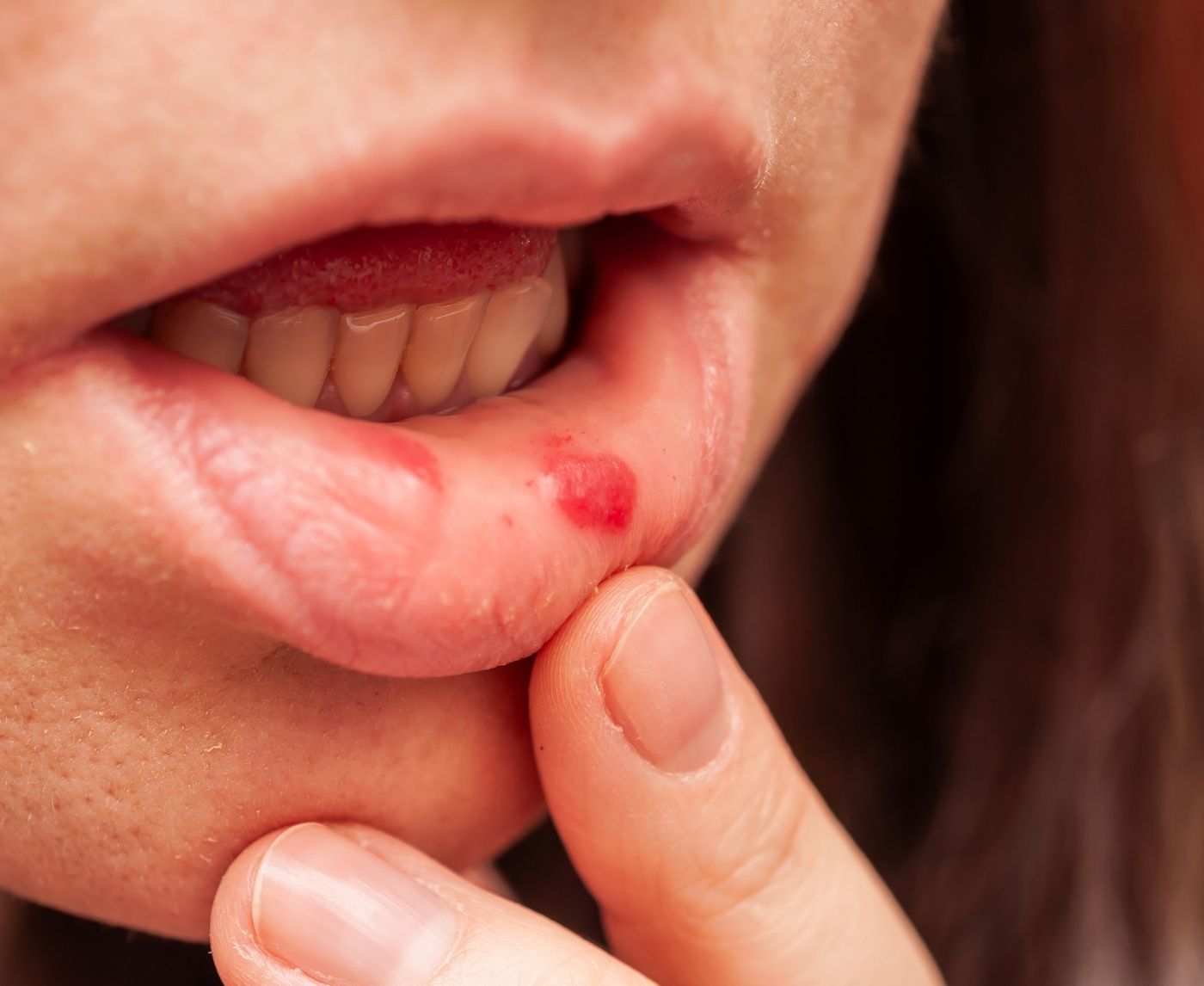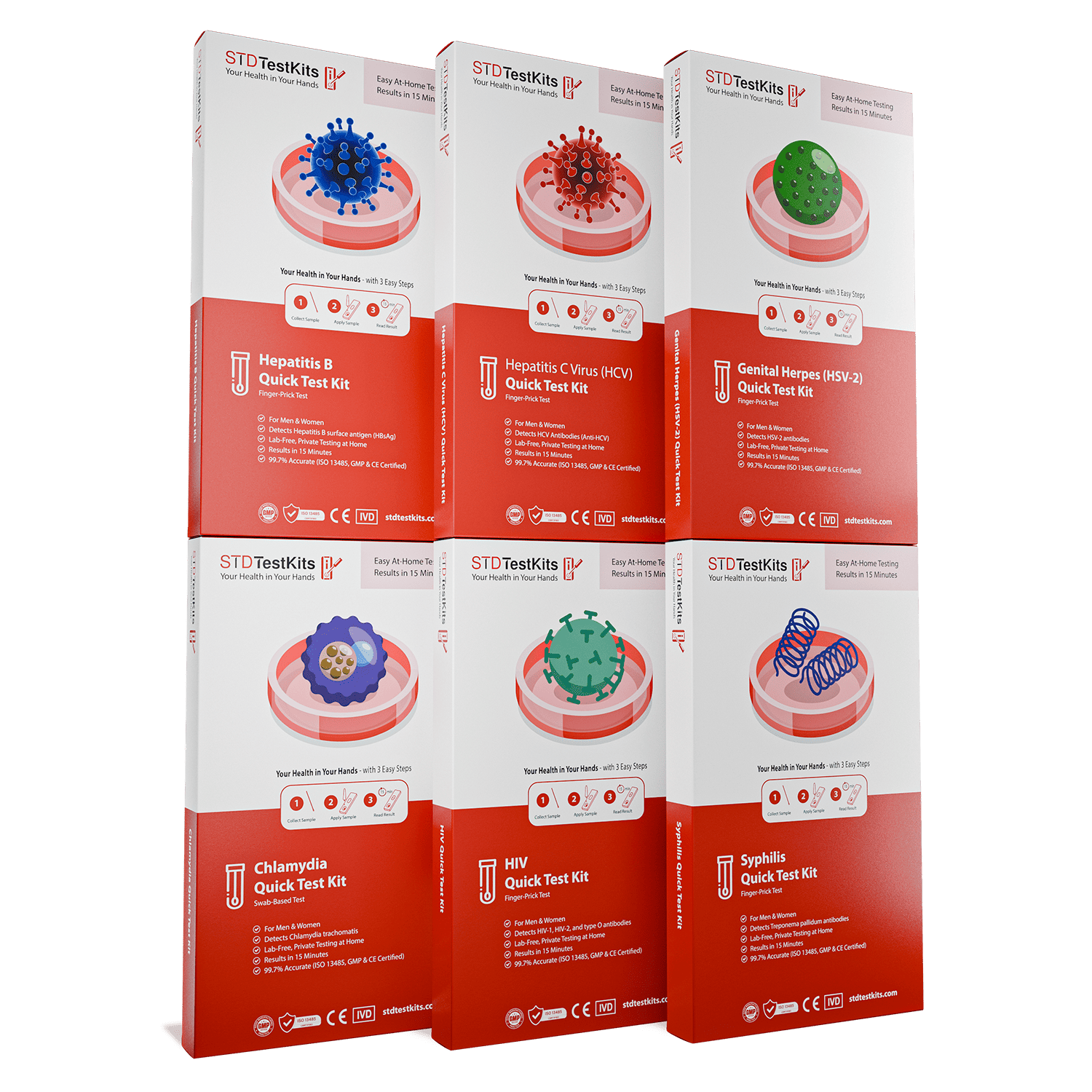Syphilis Exposure Timeline: What Happens in the First 30 Days
Quick Answer: Syphilis sores often appear as painless, firm ulcers, especially in or around the mouth after oral sex, and can be mistaken for cold sores or pimples. If a lip sore isn’t healing or feels different than usual, it’s time to test.
This Isn’t Just a Cold Sore, And Here’s Why It Matters
Let’s be honest: most people don’t think of syphilis when they see a bump on their lip. “It’s just a cold sore,” you might tell yourself. And hey, maybe it is. Herpes simplex virus type 1 (HSV-1), which causes most oral herpes outbreaks, is incredibly common, an estimated 50 to 80% of U.S. adults carry it. But here’s the twist: primary syphilis often shows up in the exact same spot, and in the exact same way.
That’s not fearmongering, it’s reality. Syphilis doesn’t always look like the textbook images in health class. In real life, it can masquerade as a pimple, an ingrown hair, a small blister, or yes, even a cold sore. And when it shows up on your mouth, especially after oral sex, you’re even less likely to suspect it.
In one Reddit thread, a woman described a single sore on her inner lip. It didn’t hurt. She assumed it was from biting herself. Weeks later, she was diagnosed with syphilis after routine screening. Her partner had no symptoms at all.
Herpes vs. Syphilis: What You Can (and Can’t) See
So how do you know what you’re looking at? Unfortunately, the human body doesn’t label its symptoms. But here’s how the two most commonly confused conditions, oral herpes and oral syphilis, typically show up. Keep in mind: these are general trends, not guarantees.
Table 1. Visual and sensory differences between cold sores and syphilis sores. These are not diagnostic tools, only testing can confirm the cause.
And here’s the kicker: you can have both. Co-infection with herpes and syphilis is not uncommon, especially for those with multiple partners or inconsistent condom use. That’s why treating any mouth sore as a potential signal, not a shameful secret, is the smart move.

People are also reading: Safe Sex Isn’t Just for the Young: Seniors and STI Prevention
Case Study: “I Thought It Was Just a Cold Sore, Then My Partner Got Diagnosed”
Ramon, 28, had dealt with cold sores since college. He knew the signs: the tingle, the swelling, the painful blisters that crusted over after a week. But in early fall, after a weekend trip with someone new, he noticed something different. No tingling this time. No pain. Just a small, dry bump near the inside of his bottom lip. It didn’t feel like herpes, but it also didn’t feel like anything else.
“I almost ignored it,” he said. “But something about it just felt…off. It didn’t act like my usual cold sores.”
Two weeks later, the person he’d hooked up with texted him: they had just tested positive for syphilis. Ramon got tested the next day, and so did his sore. Sure enough, it was syphilis.
“I’d never even thought about getting syphilis from oral,” he said. “That shook me.”
Ramon was lucky, he caught it early, got treated, and didn’t progress to later stages. But many don’t. Syphilis is infamous for being the “great imitator” because it mimics everything and reveals itself only when the damage starts stacking up.
How Oral Sex Can Lead to Mouth Sores, and More
Let’s talk exposure. Most people think of syphilis as something you get from “sex”, meaning penis-in-vagina or penis-in-anus sex. But oral sex is a major transmission route, and syphilis doesn’t care about your definitions. If your mouth touches a sore or infected skin, that’s enough.
According to the CDC, syphilis can be transmitted through oral, anal, or vaginal sex. That includes giving oral to someone who has a genital syphilis sore, or receiving oral from someone who has a sore in their mouth. Because many syphilis sores are painless and hidden (inside the mouth, on the shaft of the penis, around the anus), neither partner may know it’s happening.
And here’s the trap: syphilis sores go away on their own. They heal. They vanish. But the bacteria doesn’t, it just slips deeper into your body, often without symptoms. That’s how secondary and even tertiary syphilis can develop months or years later.
So You Have a Lip Sore, When Should You Test?
The timing of your test can make the difference between peace of mind and false reassurance. Syphilis doesn’t show up on a test the minute you’re exposed. There’s a window period, just like with many STDs, where your body hasn’t made enough antibodies for detection. That window is typically about 3 weeks.
Let’s break it down through an example. You hook up on a Friday. The following Wednesday, you notice a small bump on your lip. By Friday, it hasn’t changed. You’re concerned, so you test immediately. But if that’s less than 10–14 days after exposure, the result may be too early to detect syphilis.
Most tests for syphilis that you can do at home look for antibodies. That means they work best when your body has already started to fight off the infection, which usually happens 18 to 21 days after you were exposed. Some people may test positive earlier, especially if they already have symptoms, but it's often necessary to test again to be sure.
Table 2. Typical syphilis progression and test accuracy by time since exposure. Retesting after the 3-week mark is recommended if earlier tests were negative but symptoms remain.
If your symptoms are persistent, worsening, or unusual, don’t wait. Get tested now, then again after 3 weeks if the first result is negative. You can order a discreet kit from STD Rapid Test Kits and test at home in minutes.
If your head keeps spinning, peace of mind is one test away. Order a syphilis test kit that works on your schedule, not your anxiety.
What If It’s Not Syphilis… But Still Not Normal?
The hard truth is that it's not always easy to figure out what causes mouth sores. You could be dealing with:
1. A cold sore outbreak that looks different than usual. Changes in diet, stress, or even being in the sun can make outbreaks change shape or get worse.
2. A canker sore (aphthous ulcer), which can appear on the inner lip or gums but isn’t contagious or STD-related.
3. An allergic reaction or burn from food, toothpaste, or kissing someone with a product your skin doesn’t like.
4. Another STD, like herpes simplex virus type 2 (HSV-2), which occasionally presents orally, especially if you received oral sex from someone with genital herpes.
So yes, there are benign explanations. But guessing wrong means missing an opportunity to protect yourself, and your partners. That’s why testing matters. Not because you’re “dirty,” or “reckless,” or “bad.” But because you care enough to find out what’s really going on.
And when you do? You stop the spiral. You take your power back. You get treated if needed, and move forward with facts, not fear.
How Long Do Syphilis Sores Last? (And Why That’s a Trick Question)
Syphilis sores, also called chancres, usually last three to six weeks. They heal on their own, even without treatment. But this is where things get dangerous: healing doesn’t mean cured. Once the sore disappears, the infection moves into your bloodstream, often silently, setting the stage for secondary syphilis.
During the second stage, you may develop a rash (often on the palms or soles), fever, muscle aches, or patchy hair loss. But even those can be missed or mistaken for something else. Many people never notice a single symptom until years later, when syphilis starts damaging the brain, nerves, heart, or eyes.
That’s why waiting for a sore to “go away” is not a sign you’re fine, it’s a signal to act.
One reader shared how she waited a full month for a lip ulcer to heal. “When it finally did, I thought I dodged a bullet,” she wrote in an online forum. “But then my next test came back positive. I had no idea the infection kept going.”
If you’ve had any unusual bump or sore in your mouth in the past month, and especially if you’ve had new sexual partners, test. Even if it’s gone now. Even if you feel fine.
You can get answers at home, without making an appointment, without awkward conversations. This combo test kit checks for multiple infections, including syphilis, herpes, and HIV, in one discreet package.
Cold Sore, STI, or Something Else? The Role of Confirmatory Testing
Even with visible symptoms, no test is 100% foolproof in isolation. A negative syphilis test too early may miss the infection. A herpes test taken after the sore has healed might show no active virus, even if it was herpes. That’s why confirmatory testing matters, especially when results don’t match your symptoms, or when your gut says something’s off.
Most doctors recommend a follow-up test within 6 to 12 weeks if the first test was negative but suspicion remains. That’s not paranoia. It’s smart medicine.
Here’s what a typical sequence might look like for someone with an oral sore:
Table 3. Testing strategy and next steps for ambiguous or early-stage oral symptoms. Always consult a provider if symptoms escalate or testing access is limited.
Confirmatory testing isn’t about proving you’re sick. It’s about getting clear answers when your body’s early signals are sending mixed messages.

People are also reading: White Discharge, Itching, No STD? It Might Not Be What You Think
If It’s Positive, Here’s What Happens (Hint: You’re Not Alone)
Let’s take the fear out of it. If your test comes back positive for syphilis, here’s what happens next:
First, you’ll likely be prescribed a single injection of penicillin G benzathine, the gold standard treatment for early syphilis. If you’re allergic to penicillin, there are alternative regimens, though they may require longer courses.
Treatment stops the infection. Full stop. It can’t undo any damage already done, but it prevents further progression and transmission. If caught early, syphilis is highly curable.
Then there’s the other stuff. Telling partners. Facing stigma. Wondering how this happened. These aren’t medical issues, but they matter just as much. You are not gross. You are not broken. You are human, and you are far from alone.
In 2023 alone, there were over 200,000 cases of syphilis reported in the U.S., many of them in people under 35, and a large number in LGBTQ+ communities. The rise in oral transmission is one of the most underreported realities of modern sexual health.
You are not a cautionary tale. You are someone who got curious, got tested, and got treated. That’s power.
Should You Tell Your Partner? (And How to Do It Without Shame)
This is one of the hardest parts. But also one of the most important. Syphilis is contagious during its early stages, even if you feel fine. That means any recent partners deserve to know so they can get tested too.
There’s no perfect script. But honesty doesn’t have to be a confession. It can be an act of care. Here’s a way to say it that keeps the focus on shared wellness:
“Hey, I just found out I tested positive for syphilis. I’m already getting treated, and I wanted to tell you because you might want to get tested too. I care about your health.”
If you’re not comfortable saying it directly, many public health departments offer anonymous partner notification services, and some apps (like Healthvana or Let Them Know) allow you to send a discreet, anonymous text.
Remember: disclosure isn’t about guilt. It’s about clarity. And it could spare someone else from years of undiagnosed damage.
What If You’re Still Not Sure? Listen to Your Body, And Your Gut
Maybe your sore has healed. Maybe it never looked like a “real” STD. Maybe you tested once and got a negative, but you’re still uneasy. That’s not paranoia. That’s your gut saying: I need more answers.
Your body isn’t trying to trick you. It’s trying to communicate. And if something feels unfamiliar, persistent, or just wrong, trust that instinct.
Testing is how you break the loop of worry. It’s how you go from wondering to knowing. And that shift, from dread to clarity, is what brings relief.
You can do this from home. No appointments, no waiting rooms, no explaining your sex life to strangers. STD Rapid Test Kits offers discreet, medically reviewed tests that arrive in plain packaging. Test, read, act. All on your terms.
FAQs
1. Can syphilis really look like a cold sore?
Totally. That’s why so many people miss it. A syphilis sore on the lip or in the mouth can be a single, smooth ulcer, no pain, no itching, no drama. Unlike a cold sore, it doesn’t usually tingle beforehand or burst into little blisters. If you’re staring at a lip bump that isn’t acting like your usual cold sore, trust your gut and test.
2. How long does a syphilis sore stick around?
About three to six weeks, unless you treat it sooner. And here's the thing: just because it heals doesn’t mean you’re in the clear. That sore is just stage one. The infection keeps going underneath the surface if you don’t get antibiotics. This is why "wait and see" is not the vibe here.
3. Does oral sex really spread syphilis?
Yep, and it's way more common than people think. You can get it from giving or receiving oral sex if one person has a syphilis sore, genital, anal, or even inside the mouth. It doesn’t take a visible wound. The bacteria can spread through tiny skin-to-skin contact, and that includes kissing in some cases.
4. Herpes vs syphilis on the lip, how can I tell?
Herpes usually comes in a cluster, painful, blistery, and crusts over like a scab. Syphilis? It’s often a solo sore, smooth-edged, and weirdly painless. But here’s the catch: your body didn’t read the textbook. If it looks different, lasts longer than usual, or just has that “uh-oh” energy, get tested. No shame in clarity.
5. Is it possible to have both herpes and syphilis?
Oh, absolutely. Your immune system doesn’t lock the door after one infection. If you’re exposed to both, your body can host both. Dual infections aren’t rare, and they’re a big reason why testing matters even if you think you “already know” what a sore is.
6. What if I tested too soon and it came back negative?
Then it might just mean the test was early, not wrong. Most syphilis tests need 3+ weeks after exposure to be reliable. If you tested at day 7 and it said negative, that’s not a green light, it’s a maybe. Retest after 21 days for a result you can actually trust.
7. Can syphilis spread after the sore goes away?
Yes, and that’s exactly why it’s tricky. The sore might vanish, but the infection is still in your blood, quietly progressing. You’re still contagious during early stages. That’s why testing (not waiting) is how you protect yourself and your partners.
8. Is a cold sore always an STD?
Not always. Most cold sores are caused by HSV-1, and lots of people pick it up in childhood, from kisses, shared cups, or family contact. That said, it’s still herpes, and it can spread through oral sex. So whether it came from grandma or Grindr, it’s worth knowing your status and practicing safer contact during outbreaks.
9. Should I tell someone if I find out I have syphilis?
If they were a recent partner, yeah. And we know, that convo sucks. But it can be short, direct, and kind. You’re not accusing anyone. You’re giving them a heads-up so they can take care of themselves. “Hey, I just tested positive and wanted you to know so you can get checked too.” That’s it. That’s responsible AF.
10. Is syphilis curable?
100%. One shot of penicillin (or a short course of antibiotics) usually does the trick if you catch it early. What’s not curable? The stress of not knowing. So if you’ve got a question mark on your lip or a weird feeling in your gut, don’t wait it out. Test, treat, done.
You Deserve Answers, Not Assumptions
You don’t need to spiral or guess anymore. Whether your lip sore is a cold sore, a harmless irritation, or a sign of something deeper, the only way to know is to test. And the truth? Testing isn’t scary. It’s smart, safe, and in your control.
Don't wait and wonder; get the clarity you need. This home test kit checks for the most common STDs quickly and privately.
How We Sourced This Article: We combined current guidance from leading medical organizations with peer-reviewed research and lived-experience reporting to make this guide practical, compassionate, and accurate.
Sources
1. About Syphilis – Centers for Disease Control and Prevention
2. Diseases Characterized by Genital, Anal, or Perianal Ulcers – CDC
3. Syphilis – Symptoms and Causes – Mayo Clinic
4. Syphilis: Cause, Symptoms, Diagnosis, Treatment & Prevention – Cleveland Clinic
5. Transmission of Primary and Secondary Syphilis by Oral Sex – CDC MMWR
6. About STI Risk and Oral Sex – CDC
7. The Great Imitator Strikes Again: Syphilis Presenting as “Tongue …” – PMC
8. Sexually Transmitted Diseases and Your Mouth – MouthHealthy (ADA)
About the Author
Dr. F. David, MD is a board-certified infectious disease specialist focused on STI prevention, diagnosis, and treatment. He blends clinical precision with a no-nonsense, sex-positive approach and is committed to expanding access for readers in both urban and off-grid settings.
Reviewed by: Sarah Lin, MPH | Last medically reviewed: November 2025
This article is for informational purposes and does not replace medical advice.







